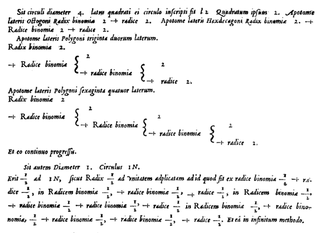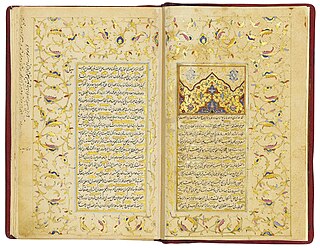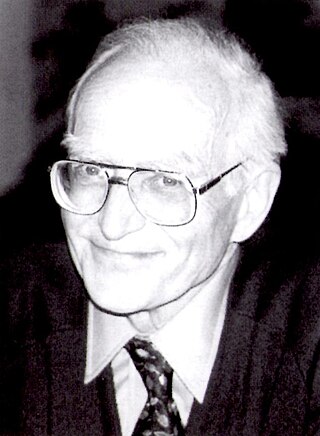John Wrench | |
|---|---|
| Born | October 13, 1911 |
| Died | February 27, 2009 (aged 97) |
| Alma mater | University at Buffalo Yale University |
| Known for | Computing π |
| Scientific career | |
| Fields | Mathematics |
| Institutions | David Taylor Model Basin |
John William Wrench, Jr. (October 13, 1911 – February 27, 2009) was an American mathematician who worked primarily in numerical analysis. He was a pioneer in using computers for mathematical calculations, and is noted for work done with Daniel Shanks to calculate the mathematical constant pi to 100,000 decimal places.
Wrench was born on October 13, 1911, in Westfield, New York, and grew up in Hamburg, New York. He received a BA summa cum laude in mathematics in 1933 and an MA in mathematics in 1935, both from the University at Buffalo. He received his PhD in mathematics in 1938 from Yale University. [1] His thesis was titled The derivation of arctangent relations. [2]
Wrench died on February 27, 2009, of pneumonia in Frederick, Maryland. [3]
Wrench started his career teaching at George Washington University, but switched to doing research for the United States Navy during World War II. His specialty for the Navy was developing high-speed computational methods, and he was a pioneer in using computers for mathematical calculations. He worked on projects involving underwater sound waves, underwater explosions, structural design, hydrodynamics, aerodynamics, and data analysis. He became deputy head of the Applied Mathematics Laboratory at the Navy's David Taylor Model Basin in 1953, and retired in 1974 as the head of the laboratory. He also had academic appointments at Yale University, Wesleyan University, University of Maryland, College Park, and American University. [3]
Wrench had a particular interest in computing the decimal digits of π, and performed some lengthy calculations even before the availability of computers. [3] During the period 1945–1956 Wrench and Levi B. Smith used a desk calculator to produce more and more digits of π, ending with 1160 places. [4] In 1961, Wrench and Daniel Shanks used an IBM 7090 computer to calculate π to 100,000 digits. [5] Harry Polachek had a printout of the 100,000 digits specially bound, inscribed in gold letters, and donated to the Smithsonian Institution. [6]
Wrench also calculated a number of other mathematical constants to high precision, for example the Euler–Mascheroni constant γ to 328 decimal places [7] and Khinchin's constant to 65 places. [8]
He was at one time the editor of the Journal of Mathematics of Computation. Wrench was a member of the National Academy of Sciences and the National Research Council. He published more than 150 scientific papers.
| Part of a series of articles on the |
| mathematical constant π |
|---|
| 3.1415926535897932384626433... |
| Uses |
| Properties |
| Value |
| People |
| History |
| In culture |
| Related topics |
In order to assure the preservation of this document, I arranged for two clear copies of the output to be printed and specially bound (inscribed in gold letters)—one of which I donated to the Smithsonian Institution in Washington, D.C.; the other I kept. The transfer to the Smithsonian took place at a small ceremony, attended by about 25 invited guests.

A difference engine is an automatic mechanical calculator designed to tabulate polynomial functions. It was designed in the 1820s, and was first created by Charles Babbage. The name, the difference engine, is derived from the method of divided differences, a way to interpolate or tabulate functions by using a small set of polynomial co-efficients. Some of the most common mathematical functions used in engineering, science and navigation, are built from logarithmic and trigonometric functions, which can be approximated by polynomials, so a difference engine can compute many useful tables.

The number e, also known as Euler's number, is a mathematical constant approximately equal to 2.71828 that can be characterized in many ways. It is the base of natural logarithms. It is the limit of (1 + 1/n)n as n approaches infinity, an expression that arises in the study of compound interest. It can also be calculated as the sum of the infinite series

In mathematics, the logarithm is the inverse function to exponentiation. That means that the logarithm of a number x to the base b is the exponent to which b must be raised to produce x. For example, since 1000 = 103, the logarithm base 10 of 1000 is 3, or log10 (1000) = 3. The logarithm of x to base b is denoted as logb (x), or without parentheses, logb x, or even without the explicit base, log x, when no confusion is possible, or when the base does not matter such as in big O notation.
The number π is a mathematical constant that is the ratio of a circle's circumference to its diameter, approximately equal to 3.14159. The number π appears in many formulae across mathematics and physics. It is an irrational number, meaning that it cannot be expressed exactly as a ratio of two integers, although fractions such as are commonly used to approximate it. Consequently, its decimal representation never ends, nor enters a permanently repeating pattern. It is a transcendental number, meaning that it cannot be a solution of an equation involving only sums, products, powers, and integers. The transcendence of π implies that it is impossible to solve the ancient challenge of squaring the circle with a compass and straightedge. The decimal digits of π appear to be randomly distributed, but no proof of this conjecture has been found.

Euler's constant is a mathematical constant, usually denoted by the lowercase Greek letter gamma, defined as the limiting difference between the harmonic series and the natural logarithm, denoted here by log:
Piphilology comprises the creation and use of mnemonic techniques to remember many digits of the mathematical constant π. The word is a play on the word "pi" itself and of the linguistic field of philology.
Richard Peirce Brent is an Australian mathematician and computer scientist. He is an emeritus professor at the Australian National University. From March 2005 to March 2010 he was a Federation Fellow at the Australian National University. His research interests include number theory, random number generators, computer architecture, and analysis of algorithms.
In mathematics, the Leibniz formula for π, named after Gottfried Wilhelm Leibniz, states that

In mathematics, Viète's formula is the following infinite product of nested radicals representing twice the reciprocal of the mathematical constant π:
In mathematics, Apéry's constant is the sum of the reciprocals of the positive cubes. That is, it is defined as the number
The Fransén–Robinson constant, sometimes denoted F, is the mathematical constant that represents the area between the graph of the reciprocal Gamma function, 1/Γ(x), and the positive x axis. That is,

The table below is a brief chronology of computed numerical values of, or bounds on, the mathematical constant pi. For more detailed explanations for some of these calculations, see Approximations of π.
William Shanks was an English amateur mathematician. He is famous for his calculation of π (pi) to 707 places in 1873, which was correct up to the first 527 places. The error was discovered in 1944 by D. F. Ferguson. Nevertheless, Shanks's approximation was the longest expansion of π until the advent of the digital electronic computer in the 1940s.

Approximations for the mathematical constant pi in the history of mathematics reached an accuracy within 0.04% of the true value before the beginning of the Common Era. In Chinese mathematics, this was improved to approximations correct to what corresponds to about seven decimal digits by the 5th century.

The history of logarithms is the story of a correspondence between multiplication on the positive real numbers and addition on the real number line that was formalized in seventeenth century Europe and was widely used to simplify calculation until the advent of the digital computer. The Napierian logarithms were published first in 1614. E. W. Hobson called it "one of the very greatest scientific discoveries that the world has seen." Henry Briggs introduced common logarithms, which were easier to use. Tables of logarithms were published in many forms over four centuries. The idea of logarithms was also used to construct the slide rule, which became ubiquitous in science and engineering until the 1970s. A breakthrough generating the natural logarithm was the result of a search for an expression of area against a rectangular hyperbola, and required the assimilation of a new function into standard mathematics.

Ghiyāth al-Dīn Jamshīd Masʿūd al-Kāshī was a Persian astronomer and mathematician during the reign of Tamerlane.

Daniel Shanks was an American mathematician who worked primarily in numerical analysis and number theory. He was the first person to compute π to 100,000 decimal places.
A timeline of numerals and arithmetic.
This is a timeline of pure and applied mathematics history. It is divided here into three stages, corresponding to stages in the development of mathematical notation: a "rhetorical" stage in which calculations are described purely by words, a "syncopated" stage in which quantities and common algebraic operations are beginning to be represented by symbolic abbreviations, and finally a "symbolic" stage, in which comprehensive notational systems for formulas are the norm.

George Eric Felton was a British computer scientist. He undertook pioneering work in the field of operating systems and programming software and is the father of the GEORGE Operating System. He held the world record for the computation of π.